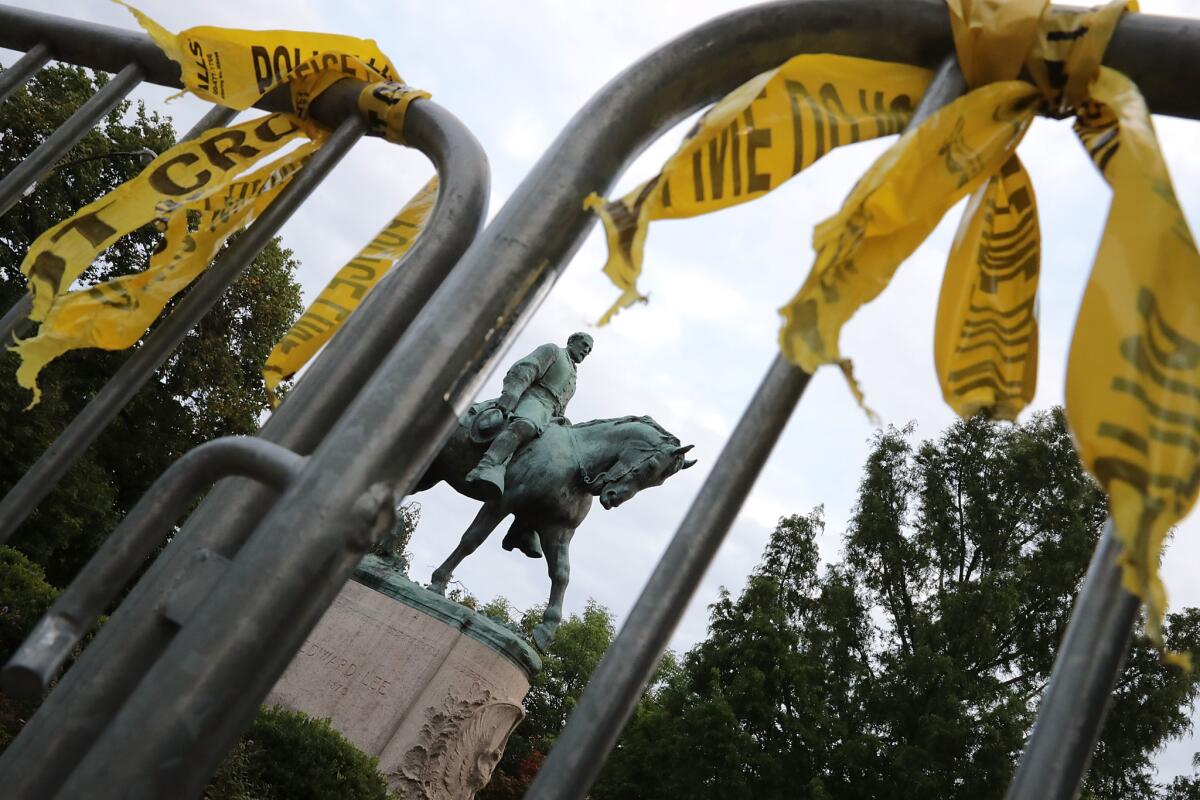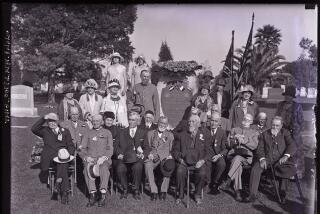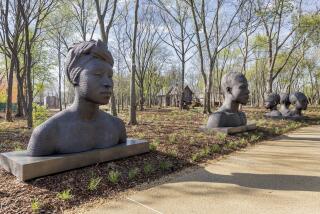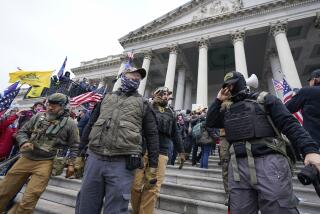Op-Ed: Why would Charlottesville racists do so much to protect a Robert E. Lee statue?

Documents show Lee was a cruel figure with the slaves he owned, encouraging overseers to severely beat them after escape attempts. (Aug. 14, 2017)
This is all over a statue, say the white supremacists who gathered in Charlottesville, Va., over the weekend. They claim that they sought to preserve an oxidized likeness of the traitor Robert E. Lee, still sitting 26 feet tall atop a stone pedestal in a local park that was once named after him. The Confederate general has been there, on his horse with hat in hand, since 1924. He remains there, despite a close City Council vote in April to sell and remove the statue and rechristen Lee Park as Emancipation Park. A circuit court judge gave it a reprieve, issuing an injunction that prohibits any sale or removal for six months. The supremacists insist that preserving this statue was their goal when they marched in this small town — armed Friday night with tiki torches, and Saturday morning with bats, guns and a Dodge Challenger whose driver ran down counter-protester Heather Heyer, killing her and injuring 19 others.
What happened in Charlottesville was terrorism, that is certain. It is tempting, amidst the chaos the chanting Nazis provoked, to write off the statue as a MacGuffin, a plot device that isn’t clearly defined and is merely used to propel the story forward. Yet it merits attention in the aftermath. Like the white nationalists in Charlottesville, Confederate memorials terrorize people of color and others, such as Heyer, who threaten the work of white supremacy.
This wasn’t the first time these folks came to Charlottesville looking for trouble. The neo-Nazi Richard Spencer staged the first of several Klan-style demonstrations in Charlottesville on May 13, lighting torches weeks after the council vote. Less than two weeks later, Charlottesville Mayor Michael Signer wrote an op-ed for the Washington Post arguing that the Lee statue should remain. As a member of the City Council, he’d voted to keep it “as a reminder that many Americans were once treated as the property of others, then as second-class citizens.” He wanted a living history. What he failed to recognize was that many are still living that history. On many sides, as our president might say — as victims and as perpetrators.
White nationalism is not just a cultural legacy. It is an ongoing public safety crisis, and should be treated as such.

The statue of Robert E. Lee stands in the center of Emancipation Park the day after the Aug. 12 Unite the Right rally in Charlottesville, Va.,
New Orleans Mayor Mitch Landrieu grasped what Signer did not. The same week that Spencer and his mob first descended on Charlottesville, Landrieu delivered a landmark speech outlining exactly why he pushed, successfully, to have his city’s monuments to the Confederacy and Jim Crow torn down.
“These monuments purposefully celebrate a fictional, sanitized Confederacy,” he said. “After the Civil War, these statues were a part of that terrorism as much as a burning cross on someone’s lawn; they were erected purposefully to send a strong message to all who walked in their shadows about who was still in charge in this city.”
In this way only does it start to make sense that racists would commit terrorism to defend monuments. The monuments themselves are terrorism. Thus the Lee sculpture honors a dishonorable man while encouraging his ideological descendants and expressing to black people that America is not ours, too. “White nationalist” is the appropriate term to use, since a white ethno-state is what Confederates sought and what their modern-day brethren still wish to achieve.
After Charlottesville, it should be clear now to everyone that the urgency to rid ourselves of these markers of America’s racist past comes not from some childish desire to block out painful history, but to challenge a racist present. White nationalism is not just a cultural legacy. It is an ongoing public safety crisis, and should be treated as such.
Our president, of course, will not do so. In addition to advancing the goals of white supremacy through his administration’s regressive public policy, Donald Trump treats domestic terrorism with a blithe indifference. He proposed refocusing an anti-terrorism task force to focus solely on Islamists, and his Department of Homeland Security halted a $400,000 grant for Life After Hate, a group dedicated to de-radicalizing neo-Nazis.
On Saturday afternoon, Trump dropped a “many sides” addendum at the end of his soft condemnation of the Charlottesville violence, blaming everyone and no one for what happened. Indeed, his remarks were so vague that Spencer and others were able to easily read into it what they pleased. The Daily Stormer, a neo-Nazi website, wrote that the “Trump comments were good. He didn’t attack us.” On Monday, Trump finally got around to stating that “racism is evil,” including “the KKK, neo-Nazis and white supremacists,” but only as part of a speech in which he — first — noted that the economy was strong.
Trump’s insufficient response is vital to understanding what the racist demonstrators intended to protect in Charlottesville. They didn’t want to simply guard the bronzed form of Robert E. Lee, a fellow white supremacist. They wanted to ensure that the work of white supremacy continues unabated. The statue is both a symbol of their lost cause and an excuse to commit violence. Now, these ethnic separatists have an ally in the White House. With his rhetorical flaccidity, the president of the United States made it clear that he wouldn’t renounce them. A general doesn’t leave his troops.
Jamil Smith is a writer in Los Angeles.
Follow the Opinion section on Twitter @latimesopinion or Facebook
MORE FROM OPINION
Racist extremists, not ‘many sides,’ brought terror to Charlottesville
Readers React: The view from Charlottesville: Tear down the statue of Robert E. Lee — now
Trump’s first response to Charlottesville was tepid and mealy mouthed. His second was too late
More to Read
A cure for the common opinion
Get thought-provoking perspectives with our weekly newsletter.
You may occasionally receive promotional content from the Los Angeles Times.










